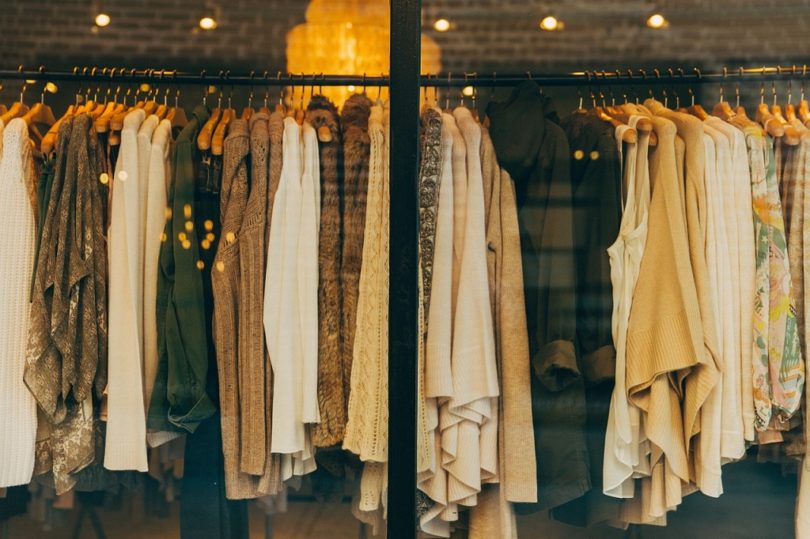Checking Out the Advancement and Impact of Garments on Modern Style Trends
The advancement of apparel has substantially affected contemporary fashion patterns, merging historical criteria with cutting-edge technologies. Legendary numbers like Coco Chanel and Yves Saint Laurent reinvented the fashion industry by introducing principles that focus on comfort and ease of access, which continue to reverberate today.
Historic Fashion Influencers
In the tapestry of fashion history, certain numbers have left an enduring mark, forming the patterns and designs that specify whole eras. Coco Chanel, a cutting edge developer, redefined women's style by presenting comfortable, elegant garments that departed from restrictive bodices.
Elsa Schiaparelli is another critical figure, renowned for her progressive designs that included surrealist art, working together with Salvador Dalí to develop whimsical pieces that tested conventional visual appeals. Her ingenious use color and strong patterns resounds in modern style. Yves Saint Laurent, on the other hand, equalized haute couture with prêt-à-porter collections, bringing runway styles to the masses and establishing a criterion for modern ready-to-wear lines.
These visionaries, amongst others, not only reinvented style in their times yet also set withstanding fads that reverberate in today's fashion business, giving a foundation upon which contemporary developers proceed to construct and introduce. Their heritages emphasize the relevance of creativity and daring in vogue's ever-evolving narrative.
Technological Improvements in vogue
Amidst the dynamic landscape of the apparel industry, technical improvements stand at the leading edge of technology, improving just how designers produce and consumers engage with fashion. The integration of 3D printing has revolutionized design processes, making it possible for designers to try out complex structures and sustainable materials that were formerly impossible. This modern technology promotes fast prototyping, decreasing waste and accelerating manufacturing times.

Smart fabrics, embedding innovation right into fabrics, are likewise changing the industry. Technologies like self-cleaning and temperature-regulating textiles provide boosted functionality and comfort. Wearable modern technology, incorporating functions like health and fitness tracking and communication, includes a brand-new dimension to style, combining visual appeals with usefulness.
Social Changes and Style
As technical advancements remain to improve the apparel industry, social changes are similarly significant, redefining design and consumer choices. In recent times, the surge of social media sites platforms has actually accelerated the dissemination of global fashion patterns, allowing diverse cultural impacts to exist together and converge. This electronic interconnectivity has actually assisted in the rapid exchange of ideas, causing a more diverse and comprehensive interpretation of design that more info here mirrors the multifaceted nature of contemporary culture.
Cultural awareness and admiration have actually triggered developers to draw inspiration from a more comprehensive spectrum of historical and ethnic contexts, incorporating typical themes with contemporary aesthetic appeals. This combination has actually caused style that resonates with a larger target market, promoting a feeling of identity and belonging across various demographics. In addition, the increasing need for personalization has driven brand names to offer customizable alternatives, allowing consumers to reveal uniqueness while showing their cultural heritage.
Moreover, shifting societal worths have actually affected style, with inclusivity and variety ending up being main Get More Info themes. The market has actually started to accept designs and influencers of numerous physique, ethnic cultures, and sex identities, difficult standard charm standards. This makeover underscores the power of cultural changes in forming the future of fashion, as style comes to be a more authentic expression of cumulative and individual identification.
Sustainability and Modern Design
While the style market proceeds to advance, the vital for sustainability has actually come to be progressively immediate, influencing modern style methods. The rise of slow style, which stresses top quality over quantity, motivates customers to spend in classic items instead than transient patterns.
In addition, contemporary design is identified by its advancement in decreasing waste and advertising circularity. This strategy not only alleviates environmental influence but additionally boosts the social obligation of style homes.

Future Trends in Fashion

Sustainability will certainly continue to be a driving force in shaping future fashion fads. The sector is increasingly adopting environment-friendly products and moral manufacturing approaches, reacting to an expanding consumer need for responsible techniques. Advancements such as bio-fabricated materials and closed-loop recycling systems are established to redefine how apparel is produced and eaten, lowering environmental influence while preserving design and quality.
Social shifts, including the surge of inclusivity and diversity, will certainly additionally play an essential duty. As society comes to be more familiar with social problems, style is expected to come to be a platform for expression and change. Designers will likely concentrate on creating collections that mirror a wider series of experiences and identifications, championing depiction and access.
Verdict
The advancement of apparel dramatically influences modern-day style fads, where historic influences merge with modern designs. This ongoing evolution underscores style's duty as a mirror to social values and technological advancement, suggesting a future abundant with advancement and inclusivity.
The development of clothes has significantly affected modern-day fashion trends, merging historic precedents with advanced innovations.Among the vibrant landscape of the fashion sector, technical developments stand at the forefront of technology, improving exactly how developers produce and consumers involve with fashion.While the fashion sector continues to evolve, the important for sustainability has ended up being progressively immediate, affecting contemporary layout techniques. As sustainability ends up being embedded in modern-day design, it leads the method for a more aware and accountable style sector.
The evolution of clothing substantially affects modern style trends, where historical impacts merge with modern designs.